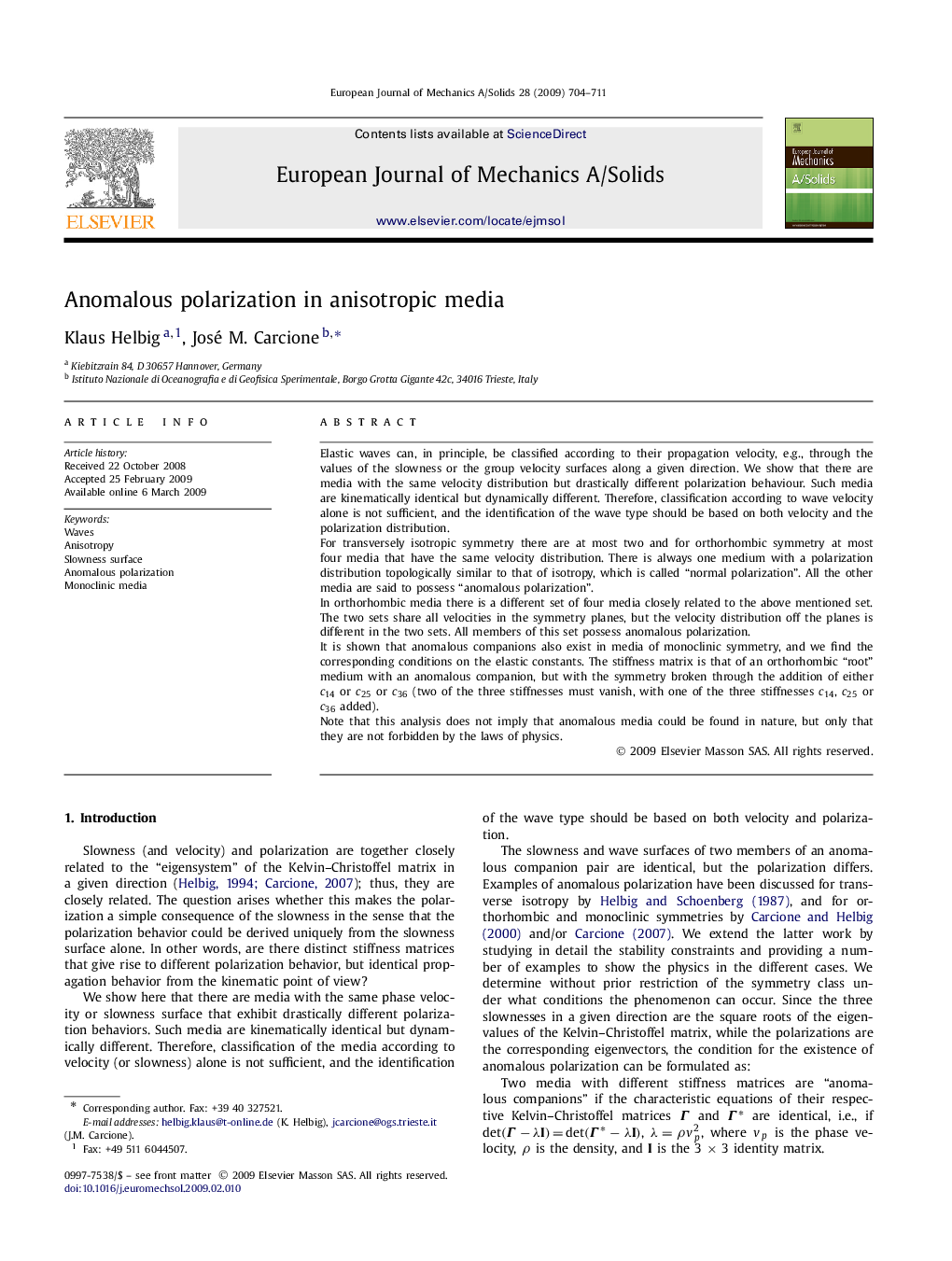| Article ID | Journal | Published Year | Pages | File Type |
|---|---|---|---|---|
| 773798 | European Journal of Mechanics - A/Solids | 2009 | 8 Pages |
Elastic waves can, in principle, be classified according to their propagation velocity, e.g., through the values of the slowness or the group velocity surfaces along a given direction. We show that there are media with the same velocity distribution but drastically different polarization behaviour. Such media are kinematically identical but dynamically different. Therefore, classification according to wave velocity alone is not sufficient, and the identification of the wave type should be based on both velocity and the polarization distribution.For transversely isotropic symmetry there are at most two and for orthorhombic symmetry at most four media that have the same velocity distribution. There is always one medium with a polarization distribution topologically similar to that of isotropy, which is called “normal polarization”. All the other media are said to possess “anomalous polarization”.In orthorhombic media there is a different set of four media closely related to the above mentioned set. The two sets share all velocities in the symmetry planes, but the velocity distribution off the planes is different in the two sets. All members of this set possess anomalous polarization.It is shown that anomalous companions also exist in media of monoclinic symmetry, and we find the corresponding conditions on the elastic constants. The stiffness matrix is that of an orthorhombic “root” medium with an anomalous companion, but with the symmetry broken through the addition of either c14c14 or c25c25 or c36c36 (two of the three stiffnesses must vanish, with one of the three stiffnesses c14c14, c25c25 or c36c36 added).Note that this analysis does not imply that anomalous media could be found in nature, but only that they are not forbidden by the laws of physics.
